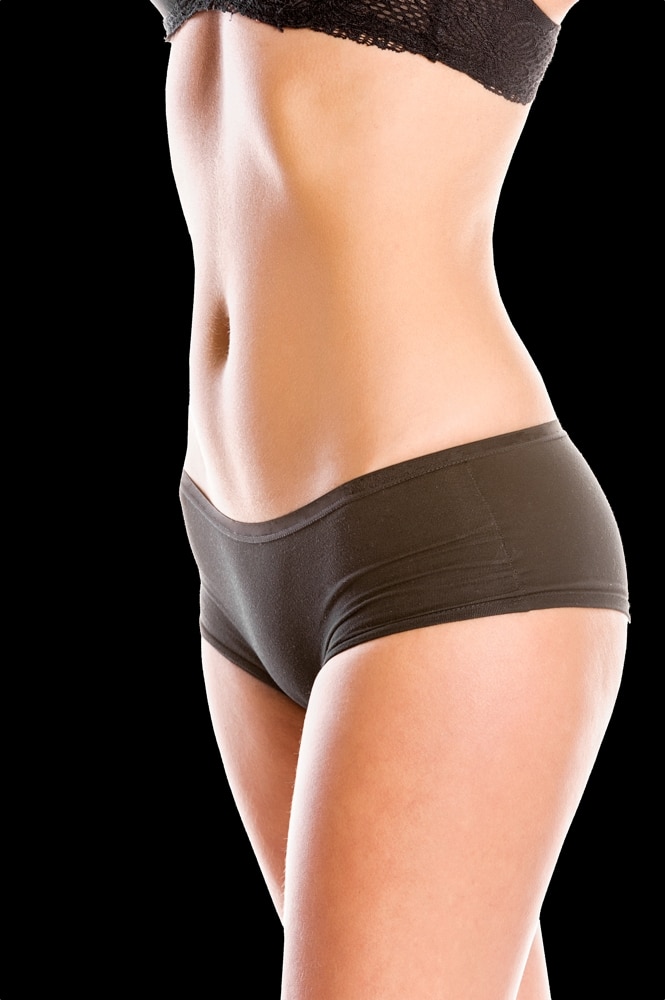Liposuction in New York City with Dr. Shridharani
Do you suffer from stubborn areas of fat that won’t go away even with diet and exercise? This is a common issue among many adults leading to a decrease in self-confidence. Liposuction is one of the most commonly performed cosmetic procedures that can remove this fat and sculpt your dream body.
What Is Liposuction?
Liposuction, also know as Lipo, was first developed in France in the 1970s. It came to the U.S. in the 80s. Liposuction is a surgical procedure where a small incision is made and a cannula (a hollow tube connected to a suction device) is inserted to break loose and suction out unwanted pockets of fat. Different methods are used by Dr. Shridharani in New York City depending on your unique needs. He uses the tumescent method in all liposuction procedures, where a solution of saline, lidocaine, and epinephrine is first injected into the target area. This solution constricts the blood vessels to create less blood loss and subsequent bruising, it anesthetizes the area, and it makes the fat easier to break loose and suction away. At Luxurgery, in addition to traditional suction-assisted liposuction, we offer power-assisted liposuction, ultrasound-assisted liposuction, and laser-assisted liposuction.
What Areas Can Liposuction Target?
Liposuction may be used to reduce localized fat deposits of the:
- Abdomen and waist
- Back
- Bra line
- Breasts
- Buttocks
- Calves and ankles
- Cheeks, chin and neck
- Chest area
- Hips and buttocks
- Inner knee
- Pubis
- Thighs
- Upper arms
Watch Dr. Shridharani Perform Liposuction of the Arms
Who Is A Good Candidate for Liposuction?
Liposuction is meant to remove unwanted pockets of fat that tend to accumulate in areas that are resistant to dietary changes or exercise. These pockets are common on the lower abdomen, the upper thighs, the jowls, and other areas on the body. Liposuction removes these pockets of fat, slimming the contour. This is a body-contouring procedure.
Excellent candidates still have good elasticity in their skin, so that the skin can tighten down to the slimmer contour once the underlying fat is removed. If the potential patient has sagging, stretched, loose skin liposuction alone is not the best procedure, as it will leave an area of loose sagging skin, albeit without fat underneath. In these cases, procedures that remove excess skin, such as a tummy tuck, are better options.
Otherwise, just about everyone, no matter what kind of shape they are in, has pockets of stubborn fat that they would like to remove. Liposuction is perfect for the job.
Liposuction Before and After
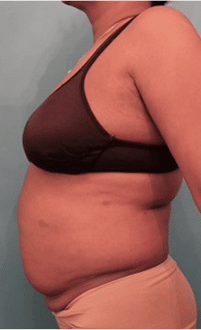
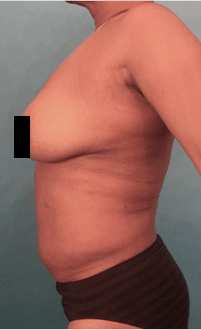
VIEW OUR LIPOSUCTION GALLERY
Liposuction For Men
Liposuction is the most common aesthetic surgical procedure performed in men. Dr. Sachin Shridharani performs liposuction for men in the same areas as women and may also use liposuction to treat gynecomastia.
Male Liposuction Before and After
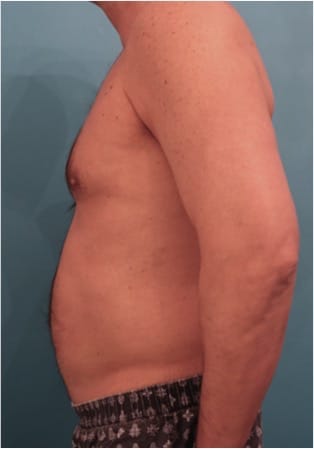
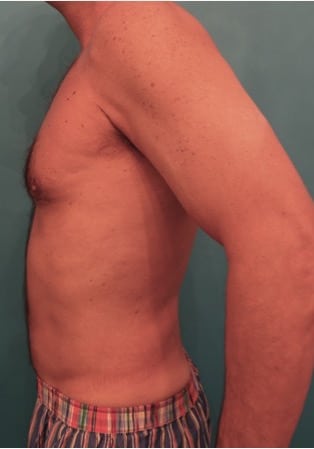
VIEW OUR MALE LIPOSUCTION GALLERY
Is Liposuction a Weight-Loss Procedure?
Some people believe they can simply remove as much fat as they want and that liposuction could be used as a form of weight loss. This isn’t true. In fact, removing too much fat in a single procedure can be dangerous for the patient. Liposuction is a body-contouring procedure that is meant to remove stubborn pockets of fat, not large amounts of fat. Dr. Shridharani generally wants his liposuction patients to be within 10% of their ideal body weight.
How Common is Liposuction?
Liposuction is one of the most commonly performed surgical procedures in aesthetic plastic surgery. Last year “lipo” was the second most frequently performed cosmetic surgical procedure, with 313,011 patients undergoing this procedure in the United States, alone. In the past 15 years, liposuction has seen a 77% increase in its number of surgeries performed.
Liposuction Techniques
Suction-assisted Lipectomy (SAL)
Also known as “traditional liposuction,” was the first form of liposuction created. Traditional liposuction was the first type of lipectomy (fat removal) to use suction. During the late 1970s and early 1980s, a number of surgeons were concurrently contributing to the technique and technology that later became traditional liposuction. Over the years, suction-assisted lipectomy has evolved into an extremely effective and safe technique to remove fat. The small cannula used in liposuction has become increasingly easy to navigate through tissue and remove fat while still maintaining the integrity of adjacent soft tissue structures. Not only did these advancements decrease the overall complication rate, but further allowed a standardized, safer technique for surgeons with varying levels of experience to adopt. In traditional liposuction, small incisions are made in the skin where the cannula is inserted. The cannula is connected to a suction pump through a transparent tube, allowing the surgeon to see the fat coming out of the patient and to know when to move on to a new location. Cannulas of different diameters can be used in order to optimize control when extracting fat. The use of different size cannulas decreases the risk of forming “divots” or uneven areas after liposuction. Also, SAL is a very useful technique to remove fat in areas such as the face or the chin when PAL may be too powerful.
Power-Assisted Liposuction (PAL)
PAL combines traditional liposuction with a vibrating cannula. PAL has become the “gold standard” across the board for fat removal. PAL uses a different cannula than traditional liposuction. The special cannula uses tiny, rapid vibrations to break up the fat cells, so they can be easily suctioned out of the body. The cannula is connected to a handle, which uses an electric motor to produce a fast in-and-out movement. Also, the fat is less likely to become clogged in a power-assisted liposuction system due to the constant vibration of the cannula. This is a more efficient approach because doctors can remove the same amount fat in a shorter amount of time – opposed to traditional liposuction. This allows for less OR time including less anesthesia used during surgery. In addition, PAL has allowed for faster recovery time and for patients to return to normal activity much quicker than before.
Ultrasound-assisted Liposuction (UAL)
Ultrasound-assisted liposuction (UAL) is a form of liposculpting, which employs ultrasonic energy to allow for more selective tissue lipolysis (fat break down). UAL emits an ultrasonic frequency to create negative pressure, which causes molecular forces between fat cells to weaken making them easier to suction out. The energy UAL produces can even raise temperatures of tissue to cause fat cells to die and clump together, without damaging nerves. The heating may also aid in collagen reproducing in the skin, which leads to more skin tightening over time.
Laser-assisted Liposuction (LAL)
Laser liposuction utilizes the principles of lasers to rupture fat cells while leaving surrounding structures unaffected. Then the fat cell remnants are suctioned out through traditional liposuction means.
Patient Testimonial for Dr. Shridharani
I got my first Lipo done in Switzerland but after a while I realized that the result was uneven and I was unhappy. So I got another one from another top plastic surgeon in Manhattan and after a couple of months was faced with an uneven result again. At that point I pretty much gave up on it until my friend told me about her surgeon Dr. Shridharani who revised her poorly done breast augmentation she got in CA. I was so impressed with her results that I consulted him and decided to have another lipo with him. I am stunned how great it turned out! It is exactly what I always imagined but the other doctors didn’t manage to give me. Dr Shirdharani is an amazing doctor who has always made me feel comfortable and has been there for me with his kind staff at every step of my recovery. I would recommend him to anyone, he is a true artist!
Click here to view more real patient testimonials!
Is Liposuction a Surgical Procedure?
Liposuction is classified as a surgical procedure because it involves small incisions to allow insertion of the cannula to suction away the fat. The incisions, however, are very small and can usually be closed with just a bandage rather than requiring sutures. Although liposuction is “surgery,” it is minimally invasive surgery.
What Is Smartlipo?
SmartLipo is an advanced laser-assisted liposuction (LAL) where laser technology is used to liquefy fat cells before they are removed with suction. The laser can be used with different frequencies, which includes a frequency to break up fat cells. The laser coagulates the surrounding blood vessels, resulting in less swelling and bruising after surgery. Smartlipo delivers precision and versatility with wavelengths that are used for small and large fat deposits, tissue retraction, fibrous areas, or secondary liposuction cases. Smartlipo’s adipose-specific technology is considered high-definition liposuction and allows for tissue retraction through soft tissue coagulation. Smartlipo has continued to show reliable and controlled energy delivery, reduced liposuction procedure time and patient downtime, and less bleeding and bruising than traditional liposuction, and high-definition body sculpting capabilities.
Watch Dr. Shridharani Perform Smartlipo
What Is Liposculpting (Etching)?
I do perform liposculpting. Liposculpting is liposuction and carefully etching and accentuating natural lines and shadows. For example, I can accentuate the abdominal muscles and the lines between the muscles to improve the overall appearance of one’s silhouette.
Can You Put the Fat from My Liposuction on Other Parts of My Body?
Through fat transfer, lipofilling is a great option for areas like the buttocks and breasts. Fat transfer to the buttocks is also known as the Brazillian Buttlift.
Can Liposuction Be Combined with Other Procedures?
Liposuction is usually used, to some degree, in tummy tucks, arm lifts, neck lifts, male breast reduction, and some female breast reduction procedures. Liposuction is usually a key part of a mommy makeover, which also includes a tummy tuck and breast lift with or without augmentation. Liposuction has become so easy to take that it can be combined with a variety of procedures in the same surgical session with Dr. Shridharani. During your consultation the two of you can discuss your possible options.
Can I Have Multiple Areas Treated with Liposuction in the Same Session?
You can have multiple areas treated in a single liposuction surgery. Generally this would be no more than 3-4 areas. The limiting factor is not necessarily the amount of fat removed, but the lidocaine concentration necessary to anesthetize multiple areas. It may be a better idea to split five or six areas into two surgeries done one week apart, rather than going all in on a single session. Again, Dr. Shridharani will discuss your options during your consultation.
Can I Go Home Immediately After Liposuction?
Once the decision to proceed with liposuction is made, the appropriate setting to perform the operation should be decided. The overwhelming majority of liposuction cases can be done on an outpatient basis (go home the same day).
In some circumstances, based on individual patient variables, patients may either prefer to be admitted overnight to a hospital or a “Short-stay 23 hours” facility, or the surgeon may find that the patient is not suitable to be discharged home and have to be admitted. The total volume of fat and fluid to be removed impacts this decision as well. The American Society of Plastic Surgeons recommends that large-volume liposuction, which is defined as total aspirate volume greater than 5 Liters (1 1/3 Gallons), should be performed at an acute care hospital, where postoperative vital signs and urinary output may be monitored overnight.
Results After Liposuction: What To Expect
Your liposuction results are immediate, although you will have some swelling and bruising at the treatment sites. As this resolves over the next 7-10 days you’ll see your results. They will continue to improve as your skin tightens down to your new contour.
The fat that Dr. Shridharani removed is gone for good. If you maintain a healthy weight and lifestyle, you won’t return fat to the area and your results will last the rest of your life. You’ll be thrilled with your slimmer contour.
Recovery After Liposuction
Liposuction continues to evolve into a less and less invasive procedure. When your procedure is complete, Dr. Shridharani will most likely have the treated areas wrapped to reduce swelling, bruising, and pain. If this is not possible, you’ll be placed in compression garments. Either way, as soon as the wraps are removed, you’ll begin to wear compression garments over the treated areas at all times. These will be worn for one month following your liposuction procedure. These garments not only reduce swelling, but they also help the skin and underlying tissues adapt to their new slimmer contours.
You will have some bruising and swelling; this will take up to 10 days to clear. Most patients can return to work in just two or three days, unless they have had multiple areas treated. Those patients may need a week off from work. Scarring will be virtually invisible.
When Can I Resume Normal Activities After Undergoing Liposuction?
Most patients may resume their normal daily activities within one week after having liposuction with Dr. Shridharani. Patients typically return to work within three to five days after surgery. Light physical activity may be resumed after two weeks. Intense “cardio” may be resumed by 3-4 weeks. Strength training is typically permitted at 5-6 weeks post-surgery.
How Long Has Liposuction Been Performed?
Modern-day liposuction techniques have been performed and modified for over 30 years.
Ready to Get Started?
If would like more information on Liposuction, contact our New York City office today. Call (212) 508-0000 to schedule a consultation with board-certified plastic surgeon Dr. Sachin Shridharani.


